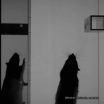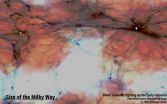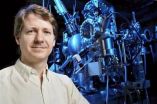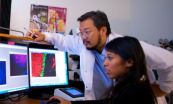(Press-News.org) Dallas – July 7, 2014 – Cardiologists at UT Southwestern Medical Center found that sedentary behaviors may lower cardiorespiratory fitness levels. New evidence suggests that two hours of sedentary behavior can be just as harmful as 20 minutes of exercise is beneficial.
The study, published in today's online edition of Mayo Clinic Proceedings, examined the association between fitness levels, daily exercise, and sedentary behavior, based on data from 2,223 participants in the National Health and Nutrition Examination Survey (NHANES).
Sedentary behavior involves low levels of energy expenditure activities such as sitting, driving, watching television, and reading, among others. The findings suggest that sedentary behavior may be an important determinant of cardiorespiratory fitness, independent of exercise.
"Previous studies have reported that sedentary behavior was associated with an increased risk for cardiovascular outcomes; however, the mechanisms through which this occurs are not completely understood," said Dr. Jarett Berry, Assistant Professor of Internal Medicine and Clinical Science and senior author of the study. "Our data suggest that sedentary behavior may increase risk through an impact on lower fitness levels, and that avoiding sedentary behavior throughout the day may represent an important companion strategy to improve fitness and health, outside of regular exercise activity."
The team of physician-researchers analyzed accelerometer data from men and women between the ages of 12 and 49 with no known history of heart disease, asthma, or stroke, and measured their average daily physical activity and sedentary behavior times. Fitness was estimated using a submaximal treadmill test, and variables were adjusted for gender, age, and body mass index. The findings demonstrate that the negative effect of six hours of sedentary time on fitness levels was similar in magnitude to the benefit of one hour of exercise.
"We also found that when sitting for prolonged periods of time, any movement is good movement, and was also associated with better fitness," said Dr. Jacquelyn Kulinski, a recent graduate from the UT Southwestern Cardiology Fellowship Training Program and first author of the paper. "So if you are stuck at your desk for a while, shift positions frequently, get up and stretch in the middle of a thought, pace while on a phone call, or even fidget."
To stay active and combat sedentary behavior, UT Southwestern preventive cardiologists recommend taking short walks during lunch and throughout the day, using a pedometer to track daily steps, taking the stairs instead of the elevator, hosting walking meetings at work, and replacing a standard desk chair with a fitness ball or even a treadmill desk, if possible.
NHANES is an ongoing series of studies conducted by the National Center for Health Statistics and the Centers for Disease Control and Prevention. The database contains health and nutritional data from a diverse population, representative of the U.S. population.
INFORMATION:
Other UT Southwestern researchers involved in the study include Dr. Amit Khera, Director of the Preventive Cardiology Program and Associate Professor of Internal Medicine; Dr. Sandeep Das, Assistant Professor of Internal Medicine; Dr. James de Lemos, Associate Program Director of the Cardiology Fellowship Program and Professor of Internal Medicine; and Colby Ayers, Faculty Associate in the Department of Clinical Science.
This study was funded with support from the National Heart, Lung and Blood Institute, the American Heart Association, and an unrestricted endowment provided to Dr. Berry by the Dedman Family.
About UT Southwestern Medical Center
UT Southwestern, one of the premier academic medical centers in the nation, integrates pioneering biomedical research with exceptional clinical care and education. The institution's faculty includes many distinguished members, including six who have been awarded Nobel Prizes since 1985. Numbering more than 2,700, the faculty is responsible for groundbreaking medical advances and is committed to translating science-driven research quickly to new clinical treatments. UT Southwestern physicians provide medical care in 40 specialties to nearly 91,000 hospitalized patients and oversee more than 2 million outpatient visits a year.
Sitting too much, not just lack of exercise, is detrimental to cardiovascular health
2014-07-07
ELSE PRESS RELEASES FROM THIS DATE:
Rats purposefully use their whiskers in different ways to help navigate in the dark
2014-07-07
VIDEO:
This is an example of the use of the whiskers for collision avoidance. Unexpected whisker contact
results in rapid deceleration of forward locomotion velocity and the animal orients to the...
Click here for more information.
The way rats use their whiskers is more similar to how humans use their hands and fingers than previously thought, new research from the University of Sheffield has found.
Rats deliberately change how they sense their environment using their ...
Small, but plentiful: How the faintest galaxies illuminated the early universe
2014-07-07
Light from tiny galaxies over 13 billion years ago played a larger role than previously thought in creating the conditions in the universe as we know it today, a new study has found. Ultraviolet (UV) light from stars in these faint dwarf galaxies helped strip interstellar hydrogen of electrons in a process called reionization.
The epoch of reionization began about 200 million years after the Big Bang and astrophysicists agree that it took about 800 million more for the entire universe to become reionized. It marked the last major phase transition of gas in the universe, ...
NASA satellites see Neoguri grow into a super typhoon
2014-07-07
From July 4 to July 7 Tropical Cyclone Neoguri strengthened from a tropical storm into a supertyphoon. NASA's Terra and Aqua satellites passed over the rapidly intensifying storm and provided forecasters with visible, infrared and microwave data on the powerful supertyphoon.
On July 4 at 0900 UTC (5 a.m. EDT) Neoguri had maximum sustained winds near 55 knots (63.2 mph/101.9 kph). It was located near 13.1 north and 141.4 east, about 207 nautical miles (238.2 miles/383.4 km) west of Andersen Air Force Base, Guam. It was moving to the northwest at 13 knots (14.9 mph/24.0 ...
The new atomic age: Building smaller, greener electronics
2014-07-07
(Edmonton) In the drive to get small, Robert Wolkow and his lab at the University of Alberta are taking giant steps forward.
The digital age has resulted in a succession of smaller, cleaner and less power-hungry technologies since the days the personal computer fit atop a desk, replacing mainframe models that once filled entire rooms. Desktop PCs have since given way to smaller and smaller laptops, smartphones and devices that most of us carry around in our pockets.
But as Wolkow points out, this technological shrinkage can only go so far when using traditional transistor-based ...
Study reveals protective role for specialized cells in intestinal and respiratory systems
2014-07-07
RIVERSIDE, Calif. – Ripping a page from the Star Trek script, specialized cells of the barrier that lines the inside of the intestines and airways of humans have invoked a biological version of Captain Kirk's famous command "shields up" as a first defense against invading microbes.
Research in the UCR School of Medicine laboratory of David Lo found that certain cells of the epithelium have a potentially important role in immune surveillance – creating an electrostatic repulsion field to microbial invasion.
The study is featured on the cover of the July issue of Infection ...
Expectant moms turn to 'Dr. Google' for pregnancy advice
2014-07-07
Pregnant women are using the Internet to seek answers to their medical questions more often than they would like, say Penn State researchers.
"We found that first-time moms were upset that their first prenatal visit did not occur until eight weeks into pregnancy," said Jennifer L. Kraschnewski, assistant professor of medicine and public health sciences, Penn State College of Medicine. "These women reported using Google and other search engines because they had a lot of questions at the beginning of pregnancy, before their first doctor's appointment."
Following the women's ...
Summer McJobs are good for kids, says UBC study
2014-07-07
A new UBC Sauder School of Business study shows that teenagers who work at summer or evening jobs gain a competitive advantage later in life. Developing early knowledge of the working world and how to manage in it, they are more likely to find good employment and earn more money in the future.
"With summer in full swing and kids sitting on the couch, parents are wondering whether to push them to find a job," says Sauder professor Marc-David L. Seidel, who co-authored the study. "Parents may think that their kids could do better than a job at the local fast food joint. ...
For a holistic approach to POW trauma
2014-07-07
The full circumstances of U.S. soldier Bowe Bergdahl's captivity have yet to be revealed. During his tour of duty in Afghanistan in 2009, Bergdahl was captured by the Taliban and held in captivity for five years until a controversial prisoner exchange led to his release on May 31. Bergdahl has been accused of deserting his post and advocating the release of Afghani prisoners.
"We do know that he suffered horrific conditions, tortured and kept in a metal cage in darkness for weeks on end," said Prof. Zahava Solomon, an Israel Prize laureate, Professor of Social Work and ...
Patient patience and pandemics
2014-07-07
Allowing patients to choose which hospital they attend when suffering illness during a pandemic rather than assigning them to a specific healthcare facility is appealing to patients during such a crisis. However, such a patient-centric hospital capacity management is conventionally viewed as inefficient system-wide. According to research published in the International Journal of Mathematics in Operational Research, an incentive-based approach for hospital capacity management can not only accomplish a high efficiency for a concerned hospital system but satisfy patients' ...
World Cup chemistry: The science behind the 'brazuca' (video)
2014-07-07
WASHINGTON, July 7, 2014 — The World Cup final is almost here, and no matter which two teams meet for the title match, there's one thing they'll both need to win: the ball. This week, Reactions examines the chemistry that goes into making the "brazuca," and what makes it different from most other soccer balls out there. The video is available at https://www.youtube.com/watch?v=1XNTfslUzt8.
INFORMATION:
Subscribe to the series at Reactions YouTube, and follow us on Twitter @ACSreactions to be the first to see our latest videos.
The American Chemical Society is a nonprofit ...






